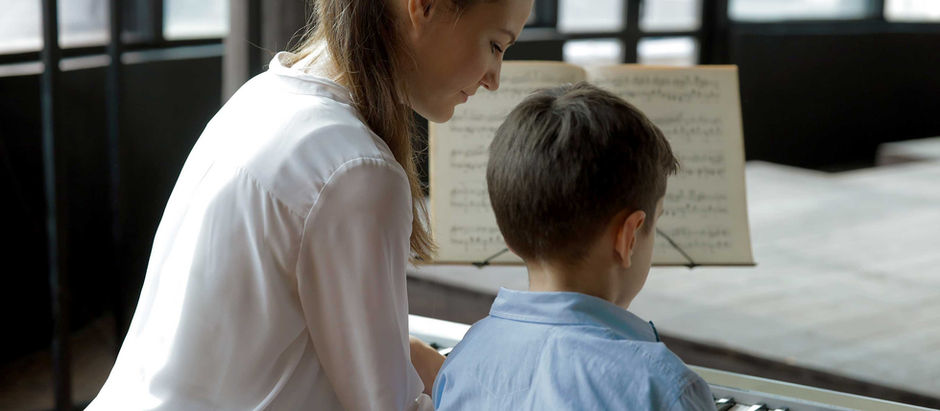top of page
Music Tuition Blog
Search


Choosing Your Keys: A Guide to Pianos for Every Musician
Embarking on the journey of learning piano can be incredibly rewarding, but the sheer variety of instruments available can be a little overwhelming. From compact keyboards to majestic grand pianos, each instrument offers a unique playing experience, sound, and set of features. Understanding the differences is crucial for choosing the right instrument for your needs, budget, and musical aspirations. Let's explore the world of pianos.
-
11 hours ago5 min read


Your Child's Music Lessons Shouldn't Look Like Yours: 4 Surprising Shifts in Modern Music Education
For many adults, the memory of childhood music lessons involves a specific, rigid routine: sit at the piano, open a single tutor book, and progress methodically from page one to the end. As documented by music historians like Dr. Sally Cathcart, this one-size-fits-all approach has roots in a time when lessons were often haphazard. But while that linear path may have worked for some, it left many others behind. Today, a profound shift is underway, moving music education away f
-
Nov 166 min read


Why a 'C' Is the Best Grade Your Child Can Get in Music
When a report card comes home, the first instinct for many parents and students is to scan for the familiar letters: A, B, C. But what does a 'B' in music theory actually mean?
-
Nov 44 min read


The Secret to Smarter Practice: It's All in Your Brain!
We've all been there – staring at our instrument, feeling overwhelmed by everything there is to learn. You might think that practice is something to squeeze in only when you have hours free, or even worse, something to avoid when you're short on time. But what if I told you there's a smarter way to practice, one that actually changes your brain and makes learning faster and more effective?
-
Sep 74 min read


The Core Concepts: Defining the Learning Methods
At Stalybridge Music Academy, we use a combination of these learning methodologies to ensure the core concepts are not just taught, but truly understood. This approach empowers students to become independent musicians and to experience music as a meaningful part of their future. It provides validity to your investment in yourself or a family member, ensuring that the time and effort spent lead to lasting skills and a deep, personal connection to music.
-
Aug 207 min read


The Hidden Cost of Missed Music Lessons
While we understand that life happens and we do not charge for cancelled lessons, the impact of missed sessions on your musical progress can
-
Mar 307 min read


Gemologists of Sound
TQ (Triquetrae) Music Students are gemologists, utilising analytical tools to examine the structural and sonic attributes of musical works.
-
Mar 2711 min read


The Harmony of Renewal: Giving Instruments a Second Life
Music education unlocks a world of creativity, expression, and discipline. However, the initial cost of instruments can be a significant...
-
Jun 24, 20242 min read


Why Teaching Piano is the Perfect Vocation: A Musician's Perspective
Are you a musician considering a career in teaching? If the piano is your passion, then look no further! Teaching piano offers a...
-
Jun 24, 20243 min read


4 steps to Improve your Music Learning
Enjoying the learning process can help you stay motivated and engaged, which can lead to better retention of information. According to a...
-
Aug 19, 20232 min read


How Does Colouring Help Music Lessons?
How Does Colouring Help Music Lessons? Before, or during, a music lesson with primary age students we often include colouring. In face colouring is a main part of the Dragon Stories and Monthly Challenges . It plays a significant role in the Let's Play series . This is a vital part of the music lesson and of homework and we encourage parents to engage with their children in these activities. You can get extra gems for it too :) The small muscles in your hands are responsible
-
Jul 13, 20233 min read


How was your practice this week?
In reception you will find a fun way to answer this question. When you come to the Academy for you lesson check out the orange tub under the ducks where you will find smiley faces for all the instruments we teach in the Academy. If you are super happy with your achievements this week. You feel you have achieved a goal, moved forward on a skill or managed every day choose a green edge. If you have had a challenging week, maybe not quite achieved all you wanted or missed a few
-
Jul 12, 20232 min read


An Idea to Amazon
How it Happened I do believe that every student needs a teaching aid that is right for them. Sometimes this means making something in a...
-
Jul 11, 20231 min read


Reasons to Learn Sax
The Saxophone is one of the most iconic instruments in the world. It is a vital part of jazz, big bands, marching bands, pop standards...
-
Jul 10, 20234 min read
bottom of page
